27 MHZ CB RADIO QSL
FIRST RADIO EXPERIENCE
AMATEUR RADIO
PIRATE RADIO ON SW
DX AND OFFSHORE RADIO
CITIZEN'S BAND RADIO
LOCAL CB CONTACTS
FOREIGN CB CONTACTS
PACKET RADIO
NICKNAMES (HANDLES)
MY OWN QSL CARDS
THE QSL GALLERY
BACK TO HOBBY
|
|
27 MHz Citizen's Band QSL Card Collection
|
|
First experience with Radio Communications, age 5 or so . . .
|
From an early age radio has been one of my interests. All since my father relaxed in bed on Sunday mornings and gave me directions on where to tune the radio to the 80 m ham band to listen to some amateur radio station or another - most of them using AM at that time during the end of the 1940's.
|
|
I was sort of acting as my father's "remote control" because the radio was in the livingroom which was at the opposite end from the bedroom in the house. I tuned the band until he told me to stop on a certain station he thought sounded interesting. The radio we had was a Swedish made EIA "Excellent" with lots of valves and several short wave bands, and it was fairly easy to tune because of the large dial. Unfortunately, this receiver does not exist any longer, only as an object in the room that was by chance caught in some old photographs.
|
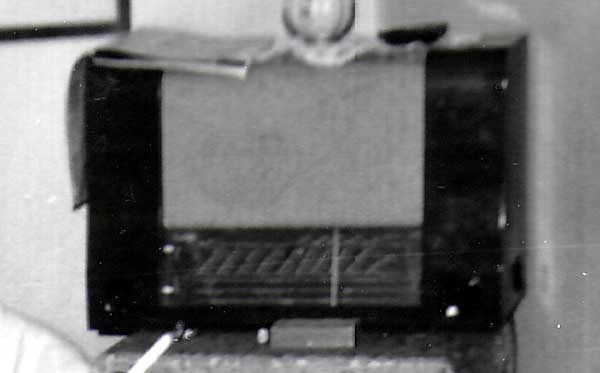
The EIA Excellent (1940's)
|
|
A peek into Amateur Radio
|
|
Around 1959 a licensed radio amateur (SM5ZO in those days) organized a course in Amateur Radio at my high school with the goal that the participants would pass the telegraphy test (40 characters per minute) and get a "C" radio amateur license. Together we built our own equipment in three baking forms, one regenerative one tube receiver, one power supply and one transmitter, a truly modular equipment. These modules were connected together by cables with banana plugs for the filament current and the anode voltage as well as connections for ear-phones and a morse key.
|
|
Later, a taste of Pirate Radio
|
|
This 5 Watt CW transmitter with one EL84 was later modified with a modulation transformer in its anode circuit and was equipped with a surplus crystal that oscillated around 8 MHz in the shortwave band. Then we connected the speaker output of an old Philips tape recorder to the modulation transformer and we had a little pirate radio station going. This must have been in or around the days of Radio Nord, the commercial radio station anchored off Stockholm around 1961. Our broadcasts, including free commercials for the nearby kiosk and hot-dog stand, were heard by ourselves at least, and could be received in a radius of about 2-3 km from the transmitter. We never found out who told the police about our little radio station, but we had to close down our project pretty quick. Luckily for us, we got away with a warning that time.
|

|
|
DX-ing with the TRIO 9R-59 and British Pirate Radio stations
|
|
The very first radio I bought with my savings money was a little portable radio with vaacum tubes. It ran on small batteries, a filament battery and a tiny 67,5 volt anode battery. The anode battery was shortlived and expensive. Around 1960 I saw an advertisment for a Philips second-hand radio. I brought it home strapped to my moped and it arrived in good order and was installed in my hobby room. It had Short wave, but the tuning was not accurate so my DX-ing did not take off at all.
Later, in 1961 when Radio Nord had started playing music from international waters outside Stockholm I bought second portable radio, a Champion Havanna. The sale of portable radios was booming and this particular model was made in Stockholm, partly by myself during a Summer job at Champion Radio. These two models had only Long and Medium wave bands but no Short wave. But as portables they were fine.
Then just before the British Offshore Pirates had started I bought the TRIO 9R-59 in the beginning of November 1963 which I used from the middle of the 60's and on. At the end of 1982 I bought a Yaesu FRG-7700 in Japan and this receiver is still in use. It has literally been all over the world!
|

Tthe old secondhand Philips receiver 1961
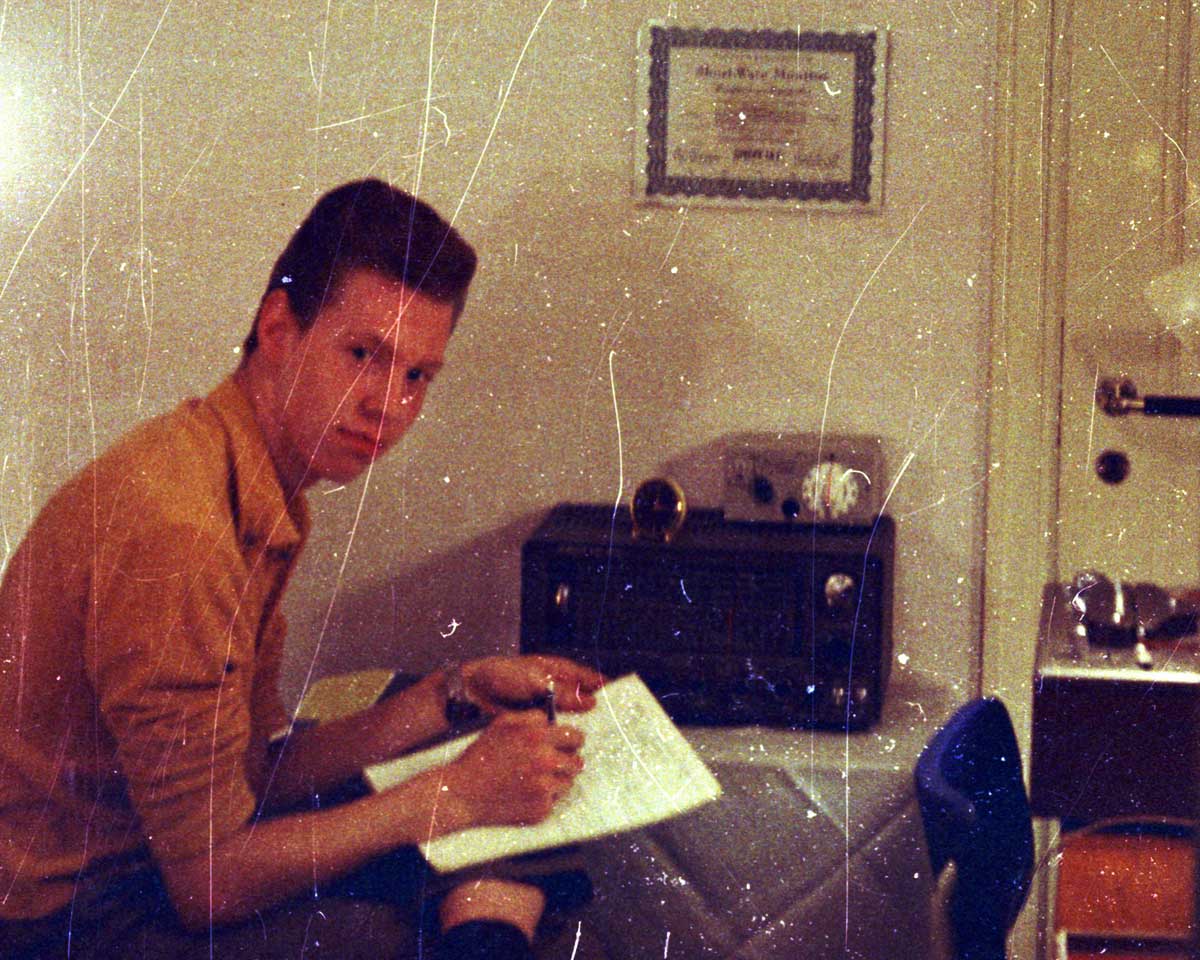
Taking notes during an interesting broadcast August 1965
|
|
A close-up photo of the Trio 9R-59. The way it looked when I sold it in 2018. Some of the knobs had been replaced due to broken parts.
|

The TRIO 9R-59
|

|
|
No Ham Radio, had to downgrade to 27 MHz CB Radio
|
|
In the middle of the 1960's I got myself a Citizend's Band licence with the station call "PR-7022". It was issued for max. three CB radios with the call signs PR-7022 A, B and C. The allocated channel was Channel 12, 27.105 MHz, no other channels could be used within the law at that time. I had the licence for three CB transceivers of the "Cadre" brand, but I did not have any equipment at all. Later, when I worked for Standard Radio & Telephone in Barkarby, I bought a San Electronics QTR-12F from a colleague there. It was a tube transceiver and it could be run on 6 or 12 VDC as well. Needless to say, this transceiver was not approved by the authorities, but what the heck, I called it a "Cadre" when someone asked about which radio I used. The microphone had a very special "click" so nobody believed me but only a few of my good buddies found out what kind of transceiver I used.
|
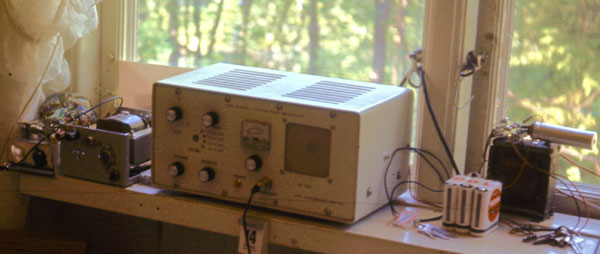
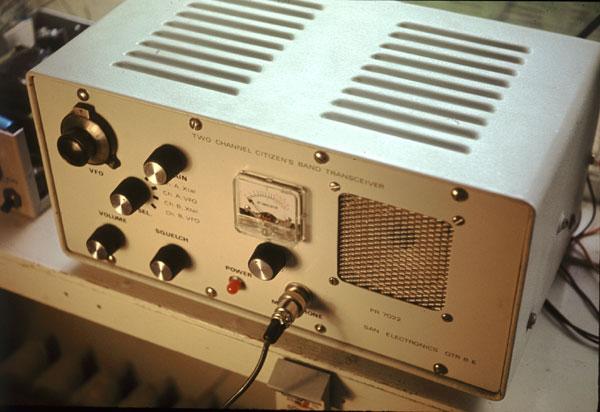 San Electronics QTR-12F
San Electronics QTR-12F
|
|
This San Electronics CB transceiver had a very quiet, yet very sensitive receiver. The noise without input signal was very low, so it was excellent for listening to weak or faraway stations. The horrible military grey colour did not suit my shack, so I took it all apart and sprayed it in a light, almost white colour and put new text on the front panel, complete with the faked model name "QTR-8E", which was type approved (but probably looked different). At that time I added a VFO and equipped it with a new channel selector, Channel A and B, with and without VFO.
The photo to the right shows the chassis as it looked before it had been equipped with the VFO. The empty space to the right is where the DC-AC converter used to be. I took it out because there was no need for it. Note the large 455 kHz IF transformers. This receiver had no ceramic or mechanical filters, but the IF part was well designed and had very good selectivity. All the knobs on the front panel were replaced with better looking ones.
|
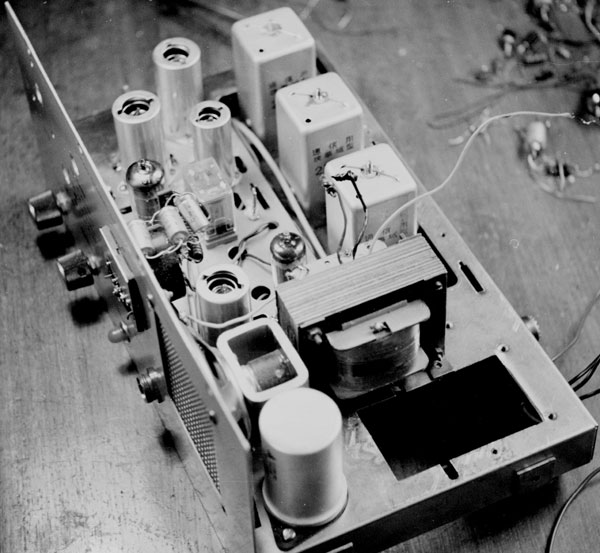

The QTR-12F inside
|
|
Later, when I decided that this "stove" as I had named the QTR-12F because the amount of heat it produced was not suitable for mobile use at all because of its sheer weight and size, I bought myself a Tokai PW-300E from a CB friend. It was fully transistorised and had an RF output of only 1.8 Watts, but with a properly matched quarter wave ground plane antenna and a good location like mine (the antenna was 50 m above sea level and more or less above the surrounding landscape), and the area I could cover was far above my own expectations. Unfortunately the Tokai was not equipped with an S-Meter, so I made myself an AGC output on the rear panel to power a 200 uV full scale panel meter. Looking at the picture today it looks like I had taken the S-meter from the QTR-12F, which I had scrapped.
|
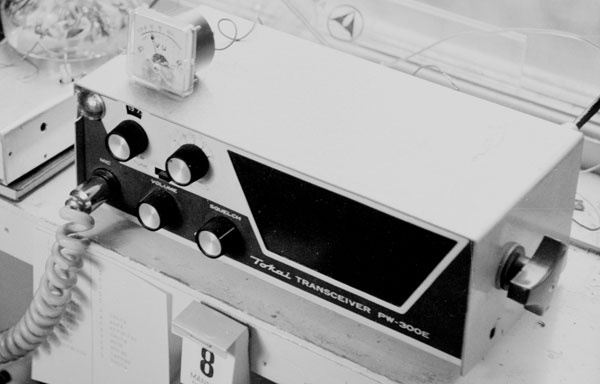
Tokai PW 300E
|

|
|
The antenna I used was a quarter wave ground plane antenna for 27 MHz which was mounted on a 6 meter mast which in its turn was mounted on the top of the chimney of the house. Three stay wires kept it from toppling over in the wind, and by removing a pin through the mast, the antenna could be lowered into the chimney for maintenance or in case of a thunderstorm. From time to time it became necessary to lower the antenna to adjust the radials to tune them for the best standing wave ratio. Strong wind tended to bend the radials which would mistune the anenna system.
The Local CB Band
There were lots of CB traffic on the band in the middle of the 1960's. I had got my call sign PR-7022 some time before I got my equipment set up and working, so many of my friends had much higher call prefixes, and a year later a friend of mine got one with the number in the 15000 range. There are many good memories from that time. The hobby brought together many people and there was a CB club in Stockholm with more than 100 members. I was active in the club and was responsible for the club magazine, mostly because I had a type writer at home!
Many years later it turned out that I started working for AB Svenska Tokai in 1969 and even at that time we churned out one popular mobile model, the Tokai PW-523, at the rate of 250 transceivers a week. Plus several portable models at roughly the same rate. Business was good. Interestingly, at that point I was not operating any CB radios for private use any more. I had married and had moved out from my old QTH with all its possibilities and lived in an apartment with no ways of erecting any antennas. On top of that my wife back then was least to say not interested in this activity.
|

The 1/4 wave GP antenna on top of the chimney.
|

|
Nordic, European and overseas Contacts
|
|
Most of these contacts up until 1969 were made at home just north of Stockholm. Some are from a mobile QTH in Oslo where I mainly used my old Volvo PV 544 as a mobile site or from my grandmother's apartment in central Oslo using the mobile antenna which was rigged up on a balcony. Contacts dated between 1970 and 1978, are either from Salem (a suburb south of Stockholm), or from Sachseln in central Switzerland where I lived from 1972 until 1978. There are only two reports logged from my Biberstein (Switzerland) house.
Many, many years later in 2003 I got a Swiss CB call sign "OMNI73" combined with the Packet Radio call sign "HED362". There are only a few QSL cards from the period 2003 until I left Switzerland in November 2012. On the other hand, I have had many eye-ball QSOs with customers bringing their equipment in for service or repair plus the daily chatter with regular stations.
|
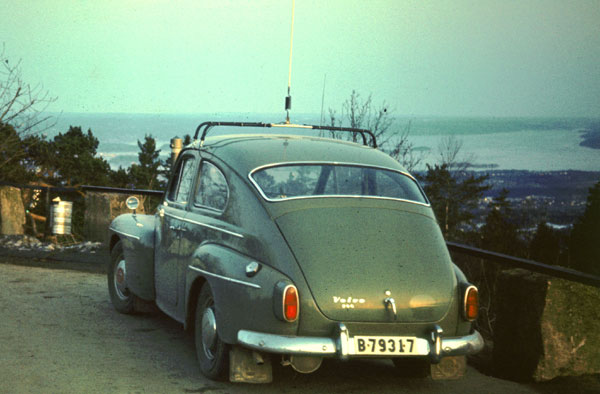
"The Green Machine" in Oslo
(at Kragst�tten)
|

|
Swiss Packet Radio on 27 MHz
|
|
Along with the Swiss CB licence there was a Packet Radio licence included. The call sign allocated to me was HED362. 4 Watts RF output power in FM mode was allowed. The TNC-2 from Stabo which I used was a TNC which had suffered a lightning strike and had been severely damaged in the power supply circuit. After careful repair it worked fine again and I still have both the Stabo TNC-2 and the Zodiac M-244. I had designed the M-244 back in 1985 and it is a bit nostalgic.
|

The Packet Radio Station in Biberstein
|
|
The Packet Radio repeater stations in Switzerland are mostly located on mountain tops, and I was doing some maintenance on one of these located not so far away from my QTH. Unfortunately for me, that location was on the other side of the Jura mountain ridge behind my house, so I could not profit from it at all. So near, but so far away because of its location behind the mountains.
The Packet Radio relay I used from home was located almost on the top of Mount Rigi in central Switzerland some 50 km away from Biberstein. Due to the stability of this connection and its 24 hour on the air I could use it as a reference when adjusting antennas or testing transmitters with very low output.
|

The antenna HEM550 uses on Rigi
|
|
On the last day in November 2014 I saw this Packet Radio transmitter located on the top of Mount Rigi in Switzerland with its 4 Watts output power on my monitor in Stockholm when the propagation was favourable with a MUF of over 22 MHz for distances of 1500 km. The distance from my Stockholm location is 1510 km.
|

Screenshot of HEM550 received in Stockholm
|

|
|
Only a few CB operators used their real names over the air. Almost every user had a "handle", a nickname made up of something in connection with his area, his job or his hobby. In the beginning I used the handle "Migrant Bird" which I chose because of the radio waves that left my antenna headed for far away countries. But Migrant Bird was sometimes difficult to understand and spell when the reception was unstable, so I changed the name to "Santa Claus" which was an immediate hit. When Santa Claus called from Sweden the CB world sharpened their ears! The biggest surprise was that nobody had taken the name before me. I never heard of or got a QSL card from any Santa Clauses.
|
|
The QSL Cards I used
|

Migrant Bird, an early QSL card from 1967
|

Santa Claus, my standard QSL card
|

|
|
But back to the main purpose of this page: The not exactly legal part of getting friends beyond the horizon so to speak. The CB rig was mostly on stand-by during the late evenings and sometimes during Spring and Summer the band opened just after midnight. Suddenly stations slowly faded in and out and those openings came either from the north or from the west. The east could be ruled out - it was the Soviet Union - no CB radio in those days from that part of the world. These stations were Faroe Islands stations located some 1400 km away to the west. Depending of the ionospheric conditions, the time of the day, the seasons and sunspot activity the band opened up towards the north and middle of Europe, the Middle East and later in the afternoons Nova Scotia. A couple of hours later and the eastern USA added to the cacophony and it became impossible to connect because of the rumble from all stations transmitting at the same time. Some stations could be heard regularly, such as a station in Tel Aviv who was on channel 3 on week-ends in the mornings. Some US stations also appeared regularly and their skip names soon triggered in my ears.

|
|














